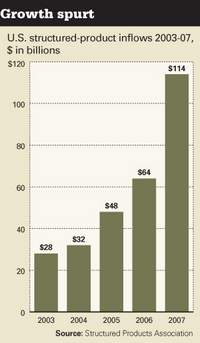The following is the introduction to the principles, which can be found on SPA's website by clicking here.
The distributor-individual investor relationship should deliver fair treatment of the individual investor. Individual investors need to take responsibility for their investment goals and to stay informed about the risks and rewards of their investments. Distributors can play a key role in helping them achieve these objectives.
In light of the increased interest in structured products as part of individual investors’ investment and asset allocation strategies, it is important for firms to keep these principles in mind in their dealings with individual investors in structured products. These principles complement our recently released, "Retail Structured Products: Principles for Managing the Provider-Distributor Relationship," available at the websites of the five sponsoring associations, which focus on the relationship between manufacturers and distributors. These principles apply to the relationship between the distributor and the individual investor.
Although these principles are aspirational in nature and do not create enforceable obligations or duties, firms involved in the distribution of structured products to individual investors are encouraged to reflect these principles in their policies and procedures. Further, each firm is encouraged, given differing regulatory environments and both cultural and client base differences, to consider the extent to which the firm should adapt these principles to its particular circumstances.
Overview
The term "structured products" refers to a variety of financial instruments that combine various cash assets and/or derivatives to provide a particular risk/reward profile that allows investors access to broader investment opportunities. The return of a structured product is usually derived from the performance of one or more underlying assets. Examples of underlying assets include, but are not limited to; interest rates, a particular equity or debt instrument, a basket of securities, a securities index or indices, an individual commodity or commodities, a commodities index, an individual currency or currency basket or any combination thereof.
Some structured products offer full or partial principal protection, while others have no principal protection. Some offer a yield; others do not. It is possible that the value of an individual structured product may not increase as much as the underlying asset, or may decrease more than the underlying asset. Some structured products offer individual investors access to new asset classes that can help with portfolio diversification.
Structured products can be more or less risky than other investment products such as equities, fixed income products, or mutual funds: there is no necessary link between product complexity and investment risk - complex products, may be low risk, and non-complex products may entail high risk. It is important that an investor understands the role in an investment strategy that can be played by any particular structured product in light of the investor’s specific investment objectives, risk tolerance, and investment horizons.To review the full March 20, 2008 draft of the SIFMA-ISDA-SPA "Structured Retail Products Principles, click here.
To make any comments, suggestions or recommendations, email SP-Principles@structuredproducts.org as soon as possible.




No comments:
Post a Comment